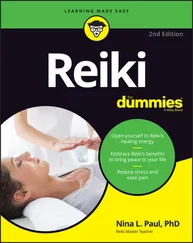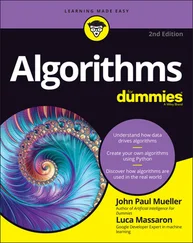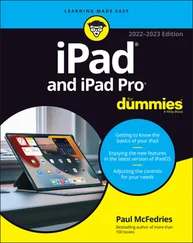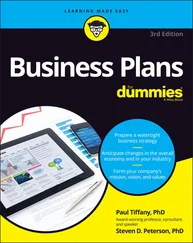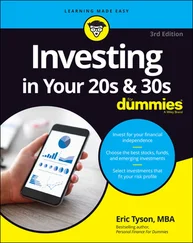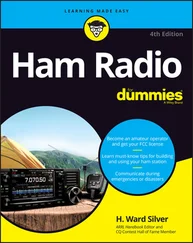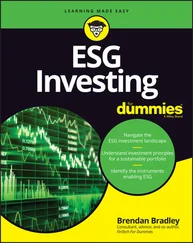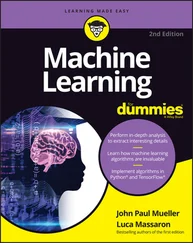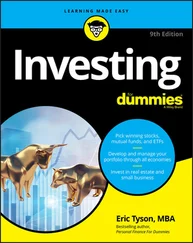1 ...6 7 8 10 11 12 ...16
Making Other Portfolio Considerations
Often, the choices in your portfolio aren’t always 100 percent “yes or no” when it comes to making the move to purchase (or sell) an asset or investment. As you find out in this section, there can be alternate, modified ways to proceed as every investor or speculator can have different circumstances, preferences, and so on.
Deciding on a percentage to put in metals
The percentage to invest in precious metals is actually a personal choice, and no hard and fast formula exists for choosing how much gold and/or silver you should buy or what percentage it should be. Plenty of expert folks have an opinion on the matter, and they’re included in Appendix A.
Part of the reason for this is that every situation is different. A senior citizen in her 80s will require much less exposure to gold and silver than someone in her 30s. Someone with positions that may get harmed by inflation will need some significant exposure to gold and silver. Check out the earlier section “ Building Your Financial Profile” to see whether a particular approach appeals to you. You can also refer to the later sidebar “The Permanent Portfolio” for a technique from investment advisor Harry Browne.
Choosing gold, silver, or both
When knowledgeable people describe the difference between gold and silver, I like this comparison: Gold is like a jumbo airliner, while silver is like a jet fighter. Gold is that steady large vehicle, while silver can be quick and nimble. Either or both is fine. Many experts on the topic will give different answers like “have X percent in gold and Z percent in silver.” I think they both have different properties found in their related vehicles such as stocks, ETFs, and futures, but in the physical form, I am agnostic.
 Go half and half if you aren’t sure. I personally prefer a greater percentage in silver. You may be thinking of both in investment terms, but also consider both in terms of barter. In the worst-case scenario (such as hyperinflation), gold and silver will be very tradable. Gold would be great for large purchases while silver would be great for common, everyday transactions. I think a good consideration is a third in gold and two-thirds in silver, but take into account your own personal circumstances.
Go half and half if you aren’t sure. I personally prefer a greater percentage in silver. You may be thinking of both in investment terms, but also consider both in terms of barter. In the worst-case scenario (such as hyperinflation), gold and silver will be very tradable. Gold would be great for large purchases while silver would be great for common, everyday transactions. I think a good consideration is a third in gold and two-thirds in silver, but take into account your own personal circumstances.
Although most investors do gold and silver for appreciation such as long-term or short-term capital gains, there are ways to gain steady income from gold and silver. The most obvious are
Dividend income from major mining stocks (see Chapter 7)
Writing covered calls on stocks/ETFs
Writing puts on stocks/ETFs
 If you’re holding a mining stock that just had a great rally, that could be a good time to write a covered call on it and generate option income. Many folks have been able to generate up to 5 to 10 percent income just by being proficient on doing covered calls. Find out more in Chapter 13.
If you’re holding a mining stock that just had a great rally, that could be a good time to write a covered call on it and generate option income. Many folks have been able to generate up to 5 to 10 percent income just by being proficient on doing covered calls. Find out more in Chapter 13.
In early 2006, Harry Browne died. I thought it was a great loss to the investment and political world. (He ran for president on the Libertarian platform in 1996 and 2000.) His claim to fame is that he was very successful in anticipating the extreme market condition of the 1970s and profiting from it. He wrote several bestselling investment books, and my favorite aspect of his writings was his insights on practical economics, which can be very useful when making investment decisions.
One of the last books he wrote was a short book that was a concise, true gem of financial wisdom called Fail-Safe Investing: Lifelong Financial Security in 30 Minutes (St. Martin’s Griffin) . In it, he detailed a model portfolio that was easily constructed by the average investor, and it had performed very well in a variety of economic conditions. It consisted of 25 percent each of cash, stocks, bonds, and … gold. He suggested that you rebalance it each year to keep the 25 percent allocation.
In other words, if one asset class performed very well and ended up being much higher than 25 percent at the end of the year, then you’d sell a portion of that part of your portfolio and distribute that amount to other parts so that at the start of the following year, you were at 25 percent in each. You would then repeat that process at the end of that subsequent year.
In any given year, one (or more) of the categories would perform well. Of course, performance of different parts of the portfolio changed as the economic conditions changed year in and year out.
Mr. Browne constructed this portfolio because he was keenly aware of the dangers of inflation, recession, and other systemic problems that occur because of political and government mismanagement (such as through inflation, taxes, and regulation). He recognized that gold, meanwhile, was not easily produced and manipulated by the government.
When you do your research online for the Permanent Portfolio, you’ll see that other investors did their variation on it. You should consider doing your own variation, but the Permanent Portfolio is a great starting point as you develop an approach that works for your personal needs.
Chapter 4
IN THIS CHAPTER
 Defining types of investment risks
Defining types of investment risks
 Lowering your investment risk
Lowering your investment risk
 Balancing risk against return
Balancing risk against return
The saying goes “no guts, no glory,” and in the world of money and finance, the equivalent is “no risk, no really cool gains.” Risk is part of the world of building and maintaining wealth and seeking financial security. So risk is something you should be aware of so you can minimize your exposure to it while you try to maximize your gains (and income).
In my financial seminars, I spend a lot of time talking about risk because it obviously needs to be dealt with but also because it’s very entwined in the deepest desires of most investors — increasing return. It goes without saying (so I’ll write it down) that the age-old equation in the world of investing is risk versus return. This equation states that if you want a greater return on your investment, you have to tolerate greater risk. If you don’t want greater risk, you have to tolerate a lower rate of return.
The world is full of pitfalls, and precious metals are no different, but keep in mind that precious metals can excel when your other investments don’t. Precious metals guard or hedge against risks that can hurt conventional stocks, bonds, or other fixed-rate vehicles.
Here are some of the risks against which precious metals excel:
Purchasing power risk: As inflation rears its ugly head, this results in higher prices.
Currency crisis: As nations increase their money supply, the long-term result is usually a crisis or even collapse of the currency.
Geopolitical risk: This can range from war to terrorism to international strife.
Systemic financial risks: This is when a crisis occurs due to problems with vehicles such as derivatives.
Читать дальше
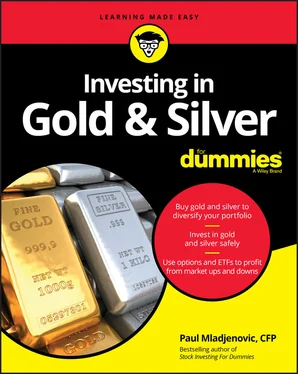
 Go half and half if you aren’t sure. I personally prefer a greater percentage in silver. You may be thinking of both in investment terms, but also consider both in terms of barter. In the worst-case scenario (such as hyperinflation), gold and silver will be very tradable. Gold would be great for large purchases while silver would be great for common, everyday transactions. I think a good consideration is a third in gold and two-thirds in silver, but take into account your own personal circumstances.
Go half and half if you aren’t sure. I personally prefer a greater percentage in silver. You may be thinking of both in investment terms, but also consider both in terms of barter. In the worst-case scenario (such as hyperinflation), gold and silver will be very tradable. Gold would be great for large purchases while silver would be great for common, everyday transactions. I think a good consideration is a third in gold and two-thirds in silver, but take into account your own personal circumstances. Defining types of investment risks
Defining types of investment risks